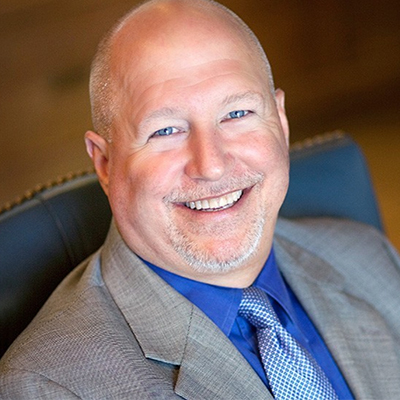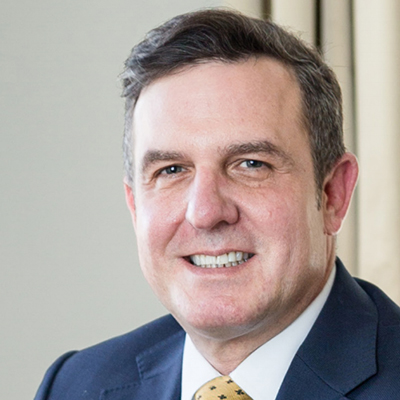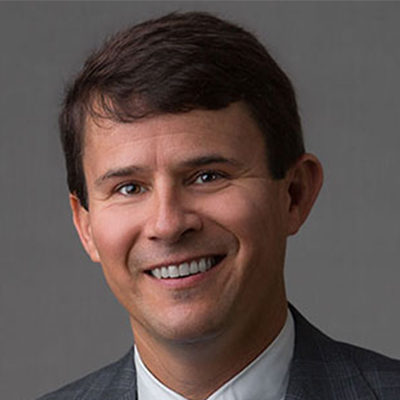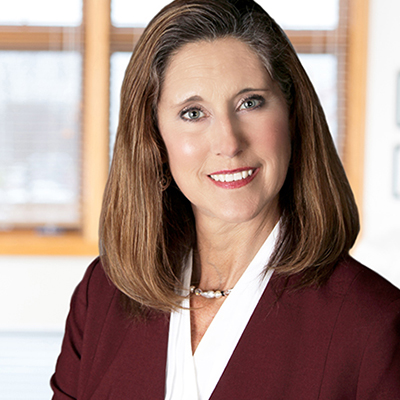After spending 25 years saying that all professions are similar and can learn from each other, I’m now ready to make a concession: Law firms are different.
The ways of thinking and behaving that help lawyers excel in their profession may be the very things that limit what they can achieve as firms. Management challenges occur not in spite of lawyers’ intelligence and training, but because of them.
Among the ways that legal training and practice keep lawyers from effectively functioning in groups are
- problems with trust;
- difficulties with ideology, values, and principles;
- professional detachment; and
- unusual approaches to decision making.
If firms cannot overcome these inherent tendencies, they may not be able to deliver on the goals and strategies they say they pursue.
The Problem of Trust
Much current practice in firm governance, organization, and (not least) compensation comes from the fact that partners vigorously defend their rights to autonomy and individualism, well beyond what is common in other professions. There is nothing inherently wrong with that.
However, as major corporations consolidate their work among a smaller number of firms, domestically and internationally, they expect that firms will serve them with effective cross-office and cross-disciplinary teams. Firms are vigorously responding to this with a stampede of lateral hires, mergers, and acquisitions. Their goal is to create big organizations offering many disciplines, locations, and cultures.
The unanswered—actually, barely asked—question is whether these firms can shift from a managerial approach, based on partner autonomy, to new approaches that can create a well-coordinated set of team players. Is the tradition of autonomy at the heart of a partner’s identity, or can it change?
In addition to fighting vigorously to preserve their autonomy, lawyers are professional skeptics: They are selected, trained, and hired to be pessimistic and to spot flaws. To protect their clients, they place the worst possible construction on the outcome of any idea or proposal, and on the motives, intentions, and likely behaviors of those they are dealing with. As Tony Sacker, my kind and gentle brother-in-law and a solicitor in the United Kingdom, says: “I am paid to have a nasty, suspicious mind.”
Lawyers carry this view into their dealings with their own partners. It is hard to unbundle which is the cause and which is the effect, but the combination of a desire for autonomy and high levels of skepticism make most law firms low-trust environments.
Recently, I was advising a firm on its compensation system. They didn’t like my recommendations. Finally, one of the partners said, “David, all your recommendations are based on the assumption that we trust each other and trust our executive or compensation committees. We don’t. Give us a system that doesn’t require us to trust each other!”
A former managing partner with whom I have discussed this says, “It’s not that I don’t trust my partners. They’re good people, mostly. It’s that I don’t want to have to trust them. Why give up any degree of control over your own affairs if you don’t have to?”
Actually, a low-trust environment has plenty of unfortunate consequences— and they are readily observable in many law firms:
- Initiatives that depend on teamwork and joint efforts will rarely be implemented well, if at all. People may show up to a practice group meeting and help develop a joint plan, but they rarely feel mutually committed to or accountable for the group’s decisions. When lawyers cannot depend on their colleagues to live up to commitments made in these meetings, they give themselves permission to have a similar attitude, and the situation spirals downward.
- When a firm’s prevailing atmosphere is one of competition, not collaboration, partners rarely make sacrifices for the good of the firm. For example, they will be reluctant to take on managerial roles that might require them to limit their full-time practices, for fear that their partners will not treat them equitably when the time comes for them to reenter full-time practice.
- There is low tolerance for ceding power or influence to practice group or firm leadership. The result is that even in the largest firms, executive authority can be so severely limited as to be meaningless. Decisions are made slowly, if not avoided altogether.
- Committees proliferate to address all topics, large and small. They are designed not only to ensure extensive participation, but also to put in place checks and balances intended to circumscribe the ability of any individual (or group) to decide anything on behalf of the firm. This may have the virtue of being democratic, but it is a primitive form of democracy that requires everyone to be involved in every decision. It both slows down decision making and unnecessarily distracts from other, more productive tasks.
- There is a drive to seemingly objective formula-based compensation systems. These serve only to entice partners into gaming the system through hoarding work and bickering over origination credits in order to look good in the official statistics. Partners constantly ask, “What’s in the compensation formula?” and they do only those things that are. As a result, many behaviors necessary for the firm’s success cannot be enforced, because they are not in the formula. Firm leaders have bemoaned this situation for decades, but few have found a way to solve it.
- Most important, absence of trust may be a significant contributing factor to the extremely short-term orientations of many law firms. If partners don’t believe the firm will remember or value their contributions to future success, why would they make any investment that they may not ultimately get credit for?
As one of my clients—a former managing partner at a high-profile firm—observed about many law firms he knew:
“Most partners were recognized and rewarded for being the smartest person in the class or the most accomplished. They have rarely experienced or understood the power of succeeding as part of a larger group or team. Their focus tends to be selfish and self-serving, even narcissistic. The result is that the firm resources are squandered and poorly used, clients don’t get the best lawyers assigned to their files, and firms are less profitable. This selfishness also leads to a shortsighted approach to decision making that inhibits long-range success because investments of time or money that don’t yield immediate results are rarely made.”
Skepticism about Ideology, Values and Principles
The single biggest source of trust in an organization occurs when everyone can be depended upon to act in accordance with a commonly held, strictly observed set of principles. Examples of such principles are “Our clients’ interests always come first; if we serve our clients well, our own success will follow” and “We have no room for those who put their personal interests ahead of the interests of the firm and its clients.” (Both of these, by the way, are from Goldman Sachs.)
It is important to note that commercial benefits do not come simply from believing in or encouraging these principles but from actually achieving an organization where partner behavior is always consistent with them. When this is the case, less time is wasted in internal negotiations and posturing, strategies are implemented, and true teamwork results. Partners allow others to make decisions on their behalf or refer work to each other across the boundaries of practice groups and location because they can be confident that the other person will make decisions using the same values and principles that they would themselves use.
Law firms appear unable to achieve this level of ideological consistency. They will buy into principles—firms can have very high ideals as long as they remain ideals—but they have difficulty with the concept of enforcement. Firms are seemingly willing to adopt strategies and statements of values and mission, but are usually unwilling to specify what the penalty would be for noncompliance. Not surprisingly, that rarely results in effective implementation.
There is a reason for this. As a partner in an eminent U.S. firm points out, “Lawyers raised in the common-law tradition are trained to have a deep suspicion of overarching principles. The essence of the common-law approach is that decisions are made incrementally, always leaving open the possibility that the next case could be treated completely differently.”
In my consulting work I have repeatedly advocated a system of help and coaching for partners who fail to meet the firm’s standards. If coaching fails to bring a partner up to the firm’s standards after a fair and reasonable amount of time, the partner is asked to leave. This is, in fact, close to the system that firms employ with respect to partners who fail to hit financial targets such as billable hours.
However, the point I keep trying to make is that if a firm wishes to excel in other areas, such as client service, collaboration, or associate supervision, the same process should apply. The response is predictable. Most law firms say that the idea of tackling a rainmaker on these “soft” issues is unrealistic, idealistic, uncommercial, and suicidal. In vain I point out that these standards are what firms already preach in their client and recruiting brochures and claim as their values.
While a majority of firms will vote to proclaim standards, they will usually not vote to enforce them. Indeed, the signs are that they vigorously prefer the opposite: Law firms have a proliferating plethora of rules, not functioning principles, because they don’t or won’t trust that their partners will adhere to the values, standards, and principles that they agreed upon. So firms end up with a mishmash of bureaucratic red tape in the hope that mandatory processes will achieve compliance when adherence to common values does not.
Professional Detachment
In their legal training, lawyers are encouraged to be dispassionate. They have been schooled to leave their personal feelings at home. One lawyer told a consultant friend of mine that when he hung up his jacket on the back of his door in the morning, with it went his personality, both of which he put on at the end of the day as he left the office.
As many researchers have shown, lawyers score very low in the areas of intimacy skills and sociability. They tend to prefer role-to-role interactions with people, inside and outside the firm, rather than eagerly seeking out person-to-person connections. This doesn’t mean they don’t like people. It just means that, statistically speaking, lawyers prefer focusing on the job at hand rather than investing in relationships with those they are working with (other partners or associates) or for (clients).
This can have unfortunate, if unintended, consequences. Consider this e-mail, which I recently received from Marein Smits, a Dutch lawyer:
“At your recent seminar you made fun of me because I laughed at the idea of being genuinely interested in the industry and business of the people who are my clients. Rightly so: My laughing was cynical… The first thing you learn when you become a lawyer is not to care. The legally sound judgment, the intellectual sparkle, that is what counts. The personal, the emotional, what is right: Throw it away, because it will taint your professionalism. ‘Do not get involved’ is the credo.”
A major rainmaker once pointed out to me, “I can’t convince my partners that this is all about human beings, that you market most successfully by showing an interest in the client as a person. My partners really don’t want to express that level of intimacy with anyone at work.” This lack of intimacy affects not only marketing and client relations, but also the way in which partners deal with each other and how firms are managed.
Rather than describing a highly interpersonal approach to coaching and helping each other succeed, the term “management” has come in many firms to mean a cold, detached, analytical approach to business. Financial scorecards are put in place, and everyone is told (implicitly or explicitly), “Here’s what you will be measured on; see you at the end of the year!” They are not helped to achieve, merely rewarded if they do, and they live in fear of what might happen if they do not. This can achieve the goal of getting everyone to work harder, but it comes at a significant price in terms of partner morale and cohesion. Help, teamwork, and mutual support are often absent, since they depend on personal interactions. Instead, there is a system of measures and rewards.
While this approach is the one preferred by many partners (and many firms) it inherently limits creation of a strategically responsive organization. In these days of ever-accelerating partner and associate mobility, a firm tied together only by measures and rewards will be inherently unstable.
There are signs that a few firms are recognizing the importance of this issue. Says one managing partner: “The idea has slowly taken hold in our firm that one should deal with people as people, show warmth and empathy, and build personal relationships with others in the firm … My leadership style has evolved over the years from trying to be comprehensive and logical to relying more on developing personal rapport and trying to motivate people.” This insight might be gaining ground. But the behavior inside many law firms has yet to catch up.
Approaches to Decision Making
When it comes to discussing their firms’ affairs, lawyers have peculiar ways of conducting discussions and arriving (or not arriving) at decisions. The essence of lawyers’ training and daily practice is to contest with other lawyers. While winning arguments against nonlawyers (such as consultants like me) is mere sport, winning them against other lawyers is a deadly serious business—a challenge to their core ability.
In a room full of lawyers, any idea, no matter how brilliant, will be instantly attacked. Lawyers are expert loophole finders, trained to find counterexamples of or exceptions to any proposition. Accordingly, within a short time, most ideas, no matter who initiates them, will be destroyed, dismissed, or postponed for future examination.
Frequently, this leads managing partners, committee chairs, and practice group leaders to substantially overinvest in decision making. They want to be armed in advance with a lengthy memo about every decision so they can dump it in the lap of the complainer as part of fending off the attack.
Another common management strategy is to keep all proposals ambiguous, so that there is nothing specific to be attacked. As a result, law firms have a remarkable propensity for half measures, launching poorly specified programs with minimal chances of success. A common law firm dialogue is as follows: Let’s have client service teams! (All agree.) What do we mean by such teams? (We don’t want to say yet.) What shall their responsibilities be? (That’s to be worked out.) What are the obligations of team members to each other? (We’ll let them figure it out.) Combine all this with the obligation to resolve issues through committees, and you have a recipe for business constipation.
This is not necessarily a problem for lawyers. My own attorney pointed out, “You are taught in law school that there are no right answers. We are actively trained to be nondecisive and are comfortable with a lack of closure.”
When lawyers reason with each other, the primary objectives are not necessarily logic, consistency, reasonableness, or fairness. In their professional practice, whether in trial or deal-making, many lawyers are more frequently rewarded for persuasiveness, rhetoric, verbal agility, and point scoring. These habits of a professional lifetime readily spill over into internal firm discussions.
Lawyers also have a strange view of the concept of risk. In any other business, an idea that was likely to work much of the time would be eagerly explored. This is not necessarily the case with lawyers. If one partner says, “This works in the vast majority of cases,” you can be sure that another will say, “Maybe, but I can construct a hypothetical scenario where it will fail to work. That makes it risky.” Probabilities do not seem to influence the discussion, only possibilities. There is no greater condemnation in legal discourse than to describe something as risky. Contracts, deals, and court cases must be bulletproof, not risky.
In other businesses, innovative thinking and action are considered a primary requirement for success. Companies eagerly search for strategic ideas and initiatives that their competitors have not discovered.
Lawyers are usually different. Presented with a new business idea, the first thing they ask is, “Which other law firms are doing this?” Unless it can be shown that the idea has been implemented by other law firms, lawyers are skeptical about whether the idea applies to their world. If everyone has these problems, they can’t be so bad, the thinking goes. As long as we are no worse than anyone else, we don’t need to change! It’s hardly a recipe for a strategic advantage.
What Can Be Done?
If lawyers deal with each other so poorly, why do they do so well financially? My answer is only partly humorous: The greatest advantage lawyers have is that they compete only with other lawyers. If everyone else does things equally poorly, and clients and recruits find little variation between firms, even the most egregious behavior will not lead to a competitive disadvantage.
A persuasive case can be made that lawyers will not change, because times are good and partners (and associates, for that matter) earn a lot of money. However, the question always arises as to how the money is being made. Many law firms have discovered that you can truly make a lot of money if you work everybody very, very hard and really slash your costs and don’t care about how people—partners, associates, or staff—feel about their work lives.
While that’s one approach to riches, it can be shown (as in my book Practice What You Preach) that it is not the best or most sustainable approach to riches. “Let’s succeed by working more hours with ever-decreasing amounts of support” is not the most sophisticated piece of business thinking I have ever heard. The answer, for firms that choose to pursue it, lies not in ever-more-sophisticated (and tough) business management tools, but in a head-on confrontation with the issues of trust, values, interpersonal behavior, and decision-making logic that I have explored here.
If firms are to deliver on the visions they have set for themselves, they must address such issues as what behavior partners have a right to expect from each other, what the real minimum standards and values are, and how common values and standards can actually be attained, not just preached.
have written about these topics extensively before and will not repeat either the arguments or the advice here. (My past writings are available on my website, davidmaister.com.) Suffice it to say that unless law firms undergo a cultural revolution, not just minor changes, most will not be able to achieve their ambitions. Dysfunctional behavior by partners, currently not only tolerated but vigorously celebrated, will prevent firms from functioning as they desire.
There is some hope, because what has been reported here are common tendencies, not ironclad laws. There are firms that are exceptional, singular counterexamples to the propositions explored here, and they are tackling head-on the core issues of culture, trust, and partner behavior. On the other hand, many other firms are doing the very things that will prevent them from creating the truly collaborative organizations their lawyers say that they want.
One of the central things we know about trust and collaboration is that they come mostly from repeated interactions between people who have not only a history together, but also the certainty of a future together. Trust comes from relationships and the expectation of continuing relationships. Over time, as they interact with each other, they as partners, practice groups, and offices may actually come to trust each other.
Unfortunately, in many of today’s firms that have been cobbled together from lateral hires and newly merged practices, the personal history that forms the basis of trust is often missing, as is the confidence that everyone will be practicing together for a long time. In many firms, even solidly successful partners live in fear that they will be among the next group of partners to be “let go.”
In such an environment, the natural evolution of trust may be difficult, if not impossible. Instead, what firms need, literally, is a constitutional convention where their lawyers draft the explicit, basic law that is going to govern their firms—the precise behaviors, rules, and principles that will determine what partners have a right to expect from each other.
When thought of as aspirations (which is usually the case), firms’ values are usually explicitly articulated and remarkably similar. However, if a value is seen as a minimum standard of behavior that all members agree to live by, then the true values remain ambiguous in most firms and vary immensely among firms.
Firms have historically flourished without constitutions that spell out minimum partner behaviors. For many, profits and revenues keep rising. What then will be the force that might create the need for change? Most likely, it will be client pressure on firms to act as firms—delivering seamless service, practice areas that have depth (and not just a collection of individualistic stars), and true, cross-boundary teamwork.
Many firms have collections of great lawyers. The time may be coming when clients will expect them to go beyond this and become effective organizations.
Without a prior, explicit agreement on minimum standards, and the resolve to enforce them, many law firms will not function well as firms but will remain what they are today: bands of warlords, each with his or her followers, ruling over a group of cowed citizens and acting in temporary alliance—until a better opportunity comes along.
NOTE: This article also appeared in the April 2006 issue of The American Lawyer.
About the Author
David Maister is the author of Managing the Professional Service Firm (1993), True Professionalism (1997), The Trusted Advisor (2000) (co-author), Practice What You Preach (2001), and First Among Equals: How to Manage a Group of Professionals (2002) (coauthor.). Prior to launching his (solo but global) consulting practice in 1985, he served as a professor at the Harvard Business School.


















